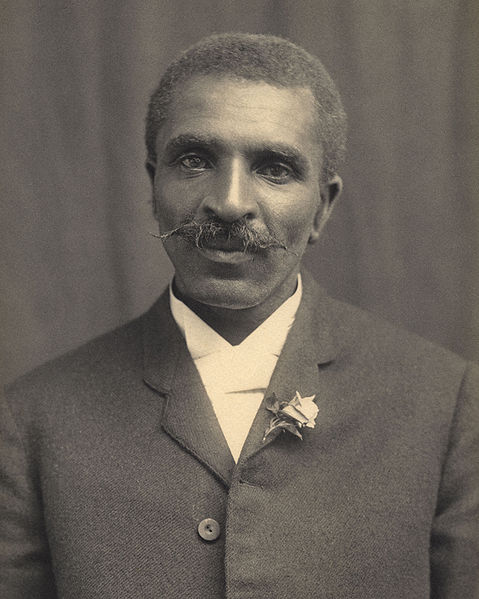Either way, when in 1864 night raiders captured their slave Mary and her baby, the couple traded their only horse to pay a man to bring them back.
 |
| Have horse, will trade for baby. Hmm. |
The man came back with a week-old baby, Mary's frail son.
Mary was never seen again.
The couple, Moses and Susan Carver, decided to raise the baby. They named him George.
This was just at the tail-end of the Civil War. Slavery was abolished, but the former slaves had few rights or privileges. For one thing, they couldn't go to school.
And George really wanted to go to school.
“Education is the key to unlock the golden door of freedom.”
Susan taught him to read and write, and from there George learned everything he could from anyone he could. As he grew older, he moved from town to town doing manual labor and searching for knowledge. This search eventually got him accepted to a college - which immediately sent him away when he showed up and wasn't what they wanted.
But eventually he got to Iowa State Agricultural College where he achieved a BS and then a master's in botany. After that, he stayed on to conduct research at Iowa Experiment Station. His work in plant pathology (disease) and mycology (fungi) gained him national recognition as a respected botanist.
“When you do the common things in life in an uncommon way, you will command the attention of the world.”
Iowa State wanted to keep him, and hug him, and call him George. They offered George money, research assistants, and a cushy position. Beautiful end to a sad story, right?
Nope.
That's when Booker T. Washington, founder of the Tuskegee Institute, heard about him. Washington desperately needed qualified teachers. He didn't think that such a distinguished person would want to work for him, but since it never hurts to ask, he sent George a long letter, telling him all about the things the southerners were suffering through, all the problems that were cropping up in their society.
 | |
| Carver in 1910 |
"I'm coming."
George spent the rest of his life figuring out ways to improve life for people. He created paints out of local clays so that people could paint their houses and churches. He made an oil to treat infantile paralysis and one day every week, mothers would line up and hand him their babies to have life massaged into them. He taught farmers about crop rotation so the soil wouldn't be depleted. Most famously, he came up with around 300 uses for the peanut.
To me, George Washington Carver was not great because of his science, although he was an incredible scientist. Carver was great because he loved people. He used his skills, studies and research to help people.
“Anything will give up its secrets if you love it enough. Not only have I found that when I talk to the little flower or to the little peanut they will give up their secrets, but I have found that when I silently commune with people they give up their secrets also – if you love them enough.”
 | |
| Carver working in his laboratory. |
This man was a truth-seeker, someone who lived with passion and delighted in everyday adventure.
I want to live like he did.
(Quotes in italics are by George Washington Carver.)
No comments:
Post a Comment